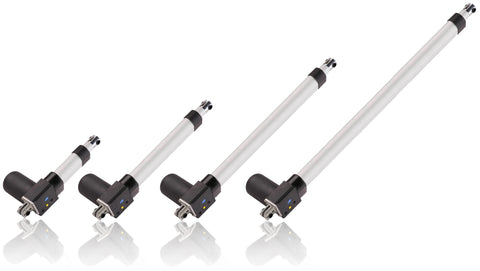Safety Actuators Market: Navigating the Future
Introduction to Safety Actuators
Safety actuators are critical components in modern industrial and manufacturing settings, playing a pivotal role in ensuring operational safety and efficiency. These devices, coming in electric, pneumatic, and hydraulic forms, are designed to control or move mechanisms and systems safely. They are integral in safeguarding personnel, equipment, and environments, particularly in dynamic and high-risk situations.

Market Outlook
According to our research, the global safety actuators market is anticipated to witness a CAGR (CAGR stands for "Compound Annual Growth Rate) of about 9.1% in the forecast period from 2023 to 2033. It is expected to reach US$1.8 billion by 2033. It is likely to exceed a valuation of around US$ 772.9 million in 2023.
Market size summary
Safety Actuators Market Estimated Size (2023E) - US$ 772.9 million
Projected Market Valuation (2033F) - US$ 1.8 billion
Value-based CAGR (2023 to 2033) - 9.1%
United States Value-based CAGR (2023 to 2033) - 9.0%
Japan Value-based CAGR (2023 to 2033) - 9.0%
South Korea Value-based CAGR (2023 to 2033) - 8.8%
Factors Driving Demand
Demand for safety actuators is expanding worldwide due to several key factors that have become increasingly important in various sectors. This growth can be attributed to advancements in technology, changing regulatory landscapes, rising safety awareness, evolving industrial practices, and need for enhanced operational efficiency.
Advancements in technology have greatly contributed to expansion of safety actuator demand. As sectors become more automated and interconnected, integration of safety features into various systems becomes crucial. Safety actuators might provide a reliable and efficient means of safeguarding workers, equipment, and the environment in dynamic and high-risk environments.
Changing regulatory landscapes would also play a significant role in driving demand for safety actuators. Governments and regulatory bodies across the globe have enacted stricter safety regulations to protect employees and minimize potential hazards. Compliance with these regulations often requires implementation of safety actuators. They can help to ensure safe operation of machinery and equipment, reducing the risk of accidents and injuries.
Rising safety awareness among both employers and employees is expected to fuel demand for safety actuators. Companies are increasingly prioritizing the well-being and safety of their workforce. They are gradually realizing that a safe work environment translates to improved productivity, reduced downtime, and enhanced employee satisfaction. Safety actuators might offer a proactive approach to mitigate risks and prevent accidents, thereby creating a safer workplace.
Evolving industrial practices have contributed to expansion of safety actuator demand. As companies adopt more complex and sophisticated machinery, there is a growing need for reliable safety measures. Safety actuators can provide a critical layer of protection by monitoring and controlling the movement and operation of machinery. They can hence be used to ensure safe and efficient production processes.
Need for enhanced operational efficiency is also anticipated to push demand for safety actuators. By implementing these devices, companies can minimize unplanned downtime caused by accidents or equipment failures.
Safety Actuators Market FAQ
1. What are safety actuators?
Safety actuators are devices in industrial settings that control or move mechanisms and systems, ensuring operational safety and efficiency, especially in dynamic, high-risk environments.
2. What is the projected market growth for safety actuators?
The global safety actuators market is expected to grow at a CAGR of about 9.1% from 2023 to 2033, reaching approximately US$ 1.8 billion by 2033.
3. What factors are driving the demand for safety actuators?
Key drivers include technological advancements, changing regulatory landscapes, rising safety awareness, evolving industrial practices, and the need for enhanced operational efficiency.
4. How do cybersecurity requirements impact safety actuators?
With the increasing need for cybersecurity, safety actuators with robust cybersecurity capabilities are in demand to comply with industry-specific standards and regulations.
5. What challenges could impede the sales of safety actuators?
Challenges include high initial costs, limited awareness of benefits, resistance to adopting new technologies, integration complexities, and stringent safety regulations.
6. Why is there a high demand for safety actuators in China?
China's demand is driven by its infrastructure development, high-profile industrial accidents, and investments in safety technologies, including safety actuators.
7. What trends are observed in the safety actuators market in the United Kingdom?
The UK market is influenced by strict safety norms, rising workplace safety awareness, and the increasing adoption of automation and robotics.
8. Which type of safety actuator is gaining popularity?
Electric safety actuators are becoming more popular due to their environmental friendliness, energy efficiency, and suitability for a wide range of applications.
9. What role do safety actuators play in the automotive industry?
They are crucial in vehicle safety systems and are increasingly used in Advanced Driver-assistance Systems (ADAS) and electric and autonomous vehicles.
10. How are manufacturers competing in the safety actuators market?
Manufacturers are focusing on innovation, product differentiation, quality, reliability, and addressing specific market needs to establish a competitive edge.
Conclusion
The global safety actuators market is expected to grow at a CAGR of about 9.1% from 2023 to 2033. The demand for safety actuators is expanding worldwide due to advancements in technology, changing regulatory landscapes, rising safety awareness, evolving industrial practices, and need for enhanced operational efficiency. Safety actuators can provide a reliable and efficient means of safeguarding workers, equipment, and the environment in dynamic and high-risk environments.
Check out our Linear Actuators here
Click here